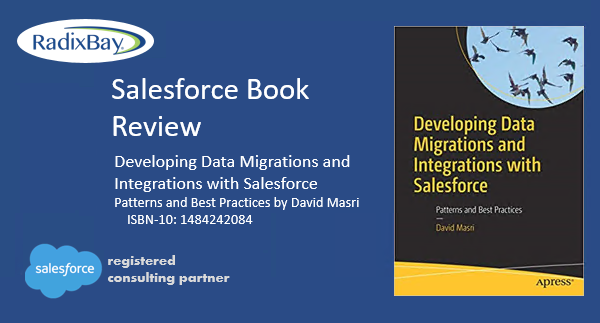
The Importance of High-Quality Data Migrations
Experienced Salesforce techs know that a well-planned data migration is a key component of all successful implementations. But data migration action items are often overlooked during the planning phase. The activities are usually crammed into the production cutover section, without fully understanding the complexity they bring to the project. A quick Google search for “Salesforce data migration best practices” will return a handful of articles. Most of the articles are quite short and provide basic information.
Enter author and Salesforce expert, David Masri. David is the Technical Director of Data Strategy and Architecture at Capgemini Invent (Global Salesforce Practice). His recently published book titled Developing Data Migrations and Integrations with Salesforce: Patterns and Best Practices provides a wealth of information on Salesforce data migrations. David’s book was recently recognized as one of BookAuthority’s 13 Best New Salesforce Books To Read In 2019. BookAuthority is the world’s leading site for nonfiction book recommendations.
Audience
For those who are not in a technical role, don’t let the book’s title intimidate you. The audience for this book could be anyone in the Salesforce ecosystem. In addition, the patterns and best practices in this book can be easily applied to other, non-Salesforce environments
Project Managers will gain a better understanding of the importance of data migrations and why they need to be a significant part of their project plan. Business Analysts are often assigned the responsibility for creating data mapping migration documents. For smaller projects, they may also be responsible for completing the data migration process. David’s book helps readers understand what constitutes a solid data mapping document, what questions they should be asking about the data, and the principles to follow when they are responsible for performing the data migration process.
Fresh Content and Real-Life Examples
In his book, Masri states “I knew if I was going to write it, I was going to provide you with new content. I absolutely did not want simply to rehash information that is online.” Masri’s book certainly delivers on that promise. Not only are there solid principles and best practices to follow, but there are also numerous nuggets of little-known Salesforce facts that are often buried deep within the Salesforce Stack Exchange or other technical documentation. Masri sprinkles dry humor throughout the book, which gives the reader a laugh and lightens its technical weight.
The author also provides real-life examples from his vast experience of completing large and complicated data migrations. The book begins by discussing the basic concepts of data architectures and Salesforce-specific data structures and continues by providing readers with best practices for both data migrations and integrations.
Building Your Data Migration Strategy
Masri does not provide a suggested checklist of tasks to complete for every data migration or integration. Just like implementations, no two data migrations are alike and each one requires its own unique plan. Instead, the book lays out the attributes of a good data migration strategy and provides a framework to create a unique plan for each project. In addition, Masri provides readers with many helpful resources such as 3rd party tool recommendations and a library of reusable code.
In summary, I highly recommend this book as a must read for everyone that is responsible for implementing Salesforce.
To learn more about our Salesforce services and how RadixBay can help, please visit our RadixBay Salesforce Center of Excellence.
Thanks for reading!


